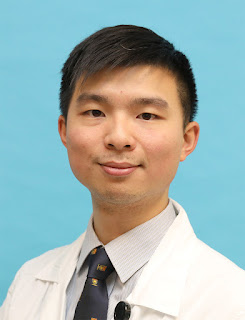Stroke in Sierra
Leone (SISLE) is a research collaboration funded by the National Institute of
Health Research (NIHR), the UK’s largest funder of health and care research, between
King's College London and the College of Medicine and Allied Health Sciences (Freetown).
This group is carrying out mixed methods research to try and understand stroke
in Sierra Leone.
Here in this
introductory blog, the team gives us an overview of the project, and the impact
of stroke in this country.
The Kamara family were enjoying a
boisterous Sunday lunch in the family home after church. As usual Pa
Alusine, the head of the family presided over the lunch, his sense of humour and
playful nature had the grandchildren squealing with laughter.
He excused himself briefly to go
to the bathroom, when his daughter looked back and saw him gripping the door
frame and making a funny face, she thought it was another joke for the grandchildren.
It took a few moments to realise
something wasn't quite right.
Pa Alusine was gripping the doorframe because
he had lost the strength in his right leg. He was unable to speak, he couldn’t ask
for help.
The family reacted quickly and
laid him on the bed. They called a nurse who lived in the community nearby, she
arrived at the bedside soon after. On her advice the family placed him in a car
and drove directly to Connaught Hospital.
Pa Alusine had had a stroke,
something that is not well understood in Sierra Leone.
Stroke in Sub
Saharan Africa
The disease burden of stroke is increasing in this region
because of increases in poor diets, smoking, alcohol consumption and lack of
exercise.
As a result of these changes more people in cities like
Freetown are at risk of non-communicable diseases such as stroke.
However, many things about stroke in this region are not
understood, such as; which ethnic groups are most at risk? How long does it
take patients to come to the hospital after a stroke? What is the cost of care?
How do survivors’ lives change as a result of stroke?
The Connaught
Hospital Stroke Register
The SISLE project is using a stroke register model to
collect data about strokes.
A stroke register is an observational database that is
focussed on gathering clinical information and data on the outcomes of
patients. These observations can then be used to both understand and improve
stroke care.
The stroke register that we have launched at Connaught
Hospital, the main government referral Hospital in Freetown, is Sierra Leone’s
first. It is collecting data, at admission, 90 days, 12 months, and 2 years
post stroke.
The information being collected is on sociodemographic
factors, stroke risk factors, stroke severity, treatment, and outcomes. We have
now been collecting for 199 consecutive days and have 221 participants on the
register
We are beginning to understand stroke in Sierra Leone much
better, however there are some aspects of stroke in this country, that a stroke
register will not help us to research.
These are the aspects of stroke that are linked to societal
and cultural perspectives, and inherent beliefs. To be able to understand this
we have reached out into the community. The Stroke survivors’ group is
educating physicians and researchers on the experiences in Sierra Leone.
Life after Stroke
in Sierra Leone
We are beginning to understand through our work with the stroke
survivors’ group, the challenges of living with stroke disability in Sierra
Leone
Lack of public awareness about stroke has led to there being
societal stigma and discrimination directed towards stroke survivors, this
makes their post stroke life more difficult.
One of the survivors highlighted how taxi drivers wouldn’t
allow people with disability into their vehicle
Some survivors even highlighted how because they now had
some form of disability, they felt like their communities were shutting them
out, they felt ostracised.
World Stroke Day
With this in mind, the stroke survivors suggested that we
carry out a walk for World Stroke Day to raise awareness of disability and
hopefully reduce social stigma.
On the 29th October, the stroke survivors,
members of the SISLE team, and the general public will be carrying out an
awareness walk on city beach, Freetown. This will form the Sierra Leone leg of
the World Stroke Organization World Stroke Day Relay.


















